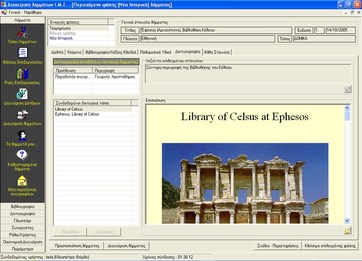On a terminology level, the development of databases sometimes created notional misunderstandings. For history as a science, the term “data” includes a contradiction that focuses on interpretation issues. Even in related sciences, like archaeology, numismatics and epigraphy, there is always the refugee of material substance: given are the findings, coins and inscriptions (even though their importance and interpretation may change). But what exactly are data for history when the notion of the event lies still in the heart of an intense epistemological and philosophical debate? This problem is not only a virtual one . Regarding the system of databases the definition of the event is unimportant. Theories, versions, parallel or conflicting narrations, identities and all the manifold substances of historical narration are similar in character. Data in the field of information are just units of information with no evaluation hints. We use the term data in our projects and our activities according to this and only this concept.

The digital format of the historical works and researches are governed by the same terms that characterize generally digital publication/reading. In spite of the recent spectacular improvements, reading from a bright source (screen) remains more tiring than reading with suitable lighting (for example reading a book). The issue is more important for works of continuous text, like literature and historical narration and possible awaits the solution of the commercial application of e-paper. In the projects and material, whose structure allows for a denser segmentation or has to do exclusively with information organization of archive character, computers and their technology have already contributed in making a huge step forward on research and its management.